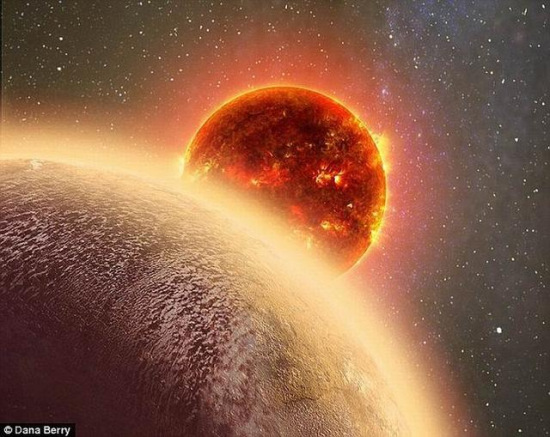
The planet in question, GJ 1132b, which orbits the red dwarf star GJ 1132 in the southern constellation Vela, is located at a distance of 39 light-years from us. (Photo/Agencies)
Astronomers have made what they believed to be the first detection of an atmosphere around an Earth-sized planet beyond our solar system.
The new discovery, published in the Astrophysical Journal, was made possible by using a telescope at the European Southern Observatory in Chile.
The planet in question, GJ 1132b, which orbits the red dwarf star GJ 1132 in the southern constellation Vela, is located at a distance of 39 light-years from us. It's a small super-Earth, with just 1.6 Earth masses and 1.4 Earth radii.
"While it's not the detection of life on another planet, it's an important step in the right direction," according to a statement from the Max Planck Institute for Astronomy, which coordinated on the research.
"The detection of an atmosphere around the super-Earth GJ 1132b marks the first time an atmosphere has been detected around a planet with a mass and radius close to Earth's mass and radius,"
Previously, the observations of exoplanet atmospheres have all involved planets much more massive than Earth: gas giants reminiscent of a high-temperature Jupiter and a large super-Earth with more than eight times the Earth's mass.
The researchers observed GJ 1132b simultaneously in seven different wavelength bands and were able to measure the slight decrease in brightness as the planet and its atmosphere absorbed some of the starlight while passing in front of the host star.
The observations showed the planet is larger in one of the seven wavelengths, suggesting the presence of an atmosphere that is opaque to this specific light but transparent to all the others.
Different possible versions of the atmosphere were then simulated and they found an atmosphere rich in water and methane would explain the observations very well.
"The planet is significantly hotter and a bit larger than Earth," John Southworth of Keele University, who led the study, said in a statement. "So one possibility is that it is a 'water world' with an atmosphere of hot steam."
The discovery of this atmosphere is encouraging because very low-mass stars are extremely common and are known to host lots of small planets, but they also show a lot of magnetic activity, causing high levels of X-rays and ultraviolet light to be produced which might completely evaporate the planets' atmospheres.
If planets like GJ 1132b can have an atmosphere that has endure for billions of years, this could mean that the conditions suitable for life are quite common in the universe, the researchers said.


















































